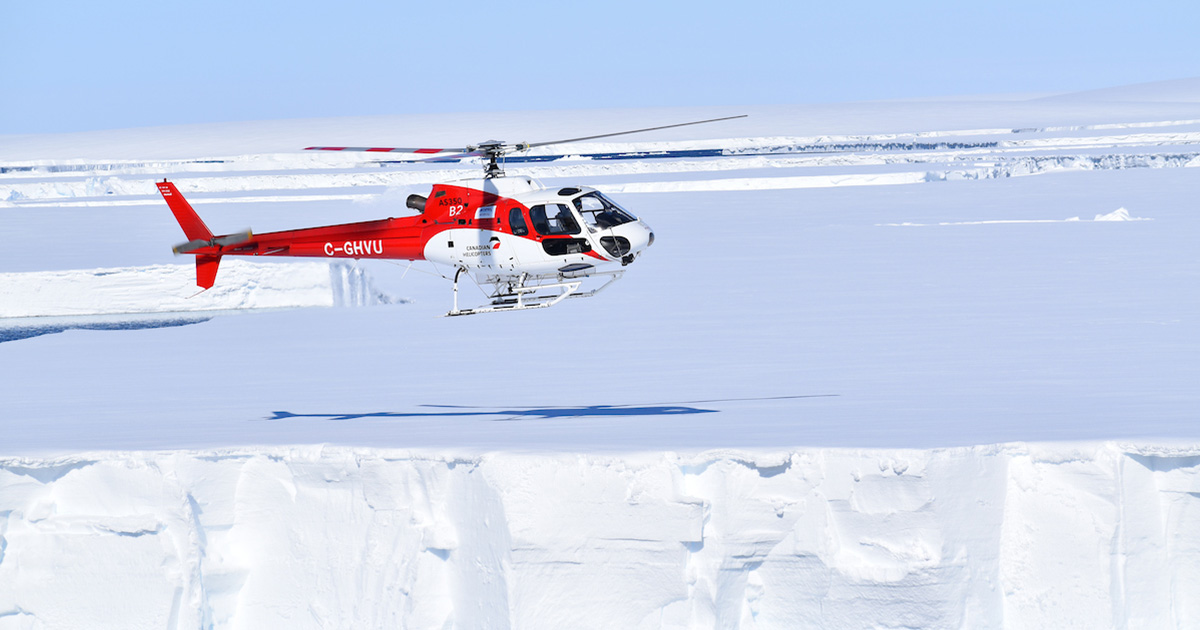Scientists from the Scripps Polar Center at UC San Diego’s Scripps Institution of Oceanography are undertaking groundbreaking field research in Antarctica this season.
The onset of the Antarctic summer, which lasts from December through February and features somewhat milder conditions with more daylight hours, marks the start of the traditional scientific field season on the harshest continent on Earth.
Throughout the 2023-24 Antarctic season, researchers and students from Scripps Oceanography and the Scripps Polar Center are diving into research projects including a citizen science initiative focused on phytoplankton diversity and penguin guano, an investigation into the mechanisms driving ice loss, probing ancient ice to reveal the planet's climate history, and an exploration of marine microbes’ roles in Antarctic food webs.
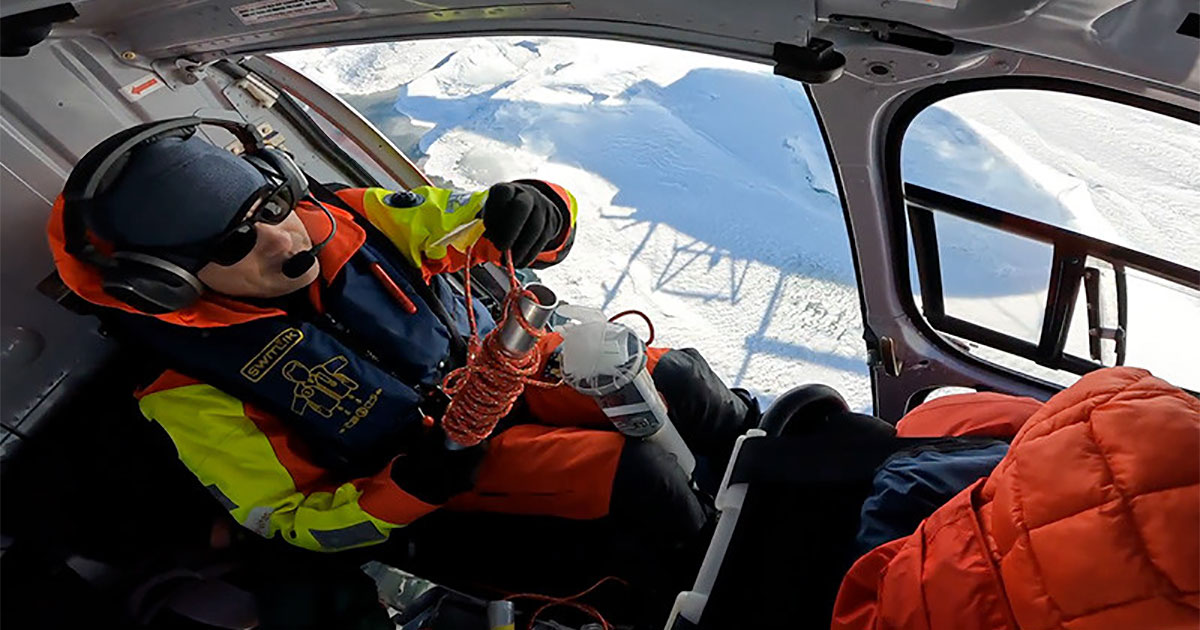 Scripps researcher Jamin Greenbaum during a previous expedition to Thwaites Glacier in West Antarctica in early 2022. He led a team that deployed specially designed sensors via helicopter to make temperature, salinity, water velocity, and depth readings in areas that are inaccessible to ships. (Image credit: Jamin Greenbaum)
Scripps researcher Jamin Greenbaum during a previous expedition to Thwaites Glacier in West Antarctica in early 2022. He led a team that deployed specially designed sensors via helicopter to make temperature, salinity, water velocity, and depth readings in areas that are inaccessible to ships. (Image credit: Jamin Greenbaum)
This season has been marked by the cancellation or postponement of numerous projects due to funding challenges within the National Science Foundation’s Office of Polar Programs. Researchers are also contending with a shortage of resources that stems from a backlog set in motion by the COVID-19 pandemic. Several Scripps-affiliated projects were impacted by these issues, including a study led by research physiologist Paul Ponganis focused on diving adaptations in emperor penguins that was postponed by a shortage of dorm space at McMurdo Station.
But numerous other projects are proceeding as planned. Keep reading to explore the science being conducted by Scripps Polar Center researchers in Antarctica this field season.
EXPLORING RETREATING ICE SHELVES
Scripps researcher Jamin Greenbaum’s fieldwork, supported by NSF and NASA, will visit both the West and East Antarctic Ice Sheets in January through mid-February. On both ice sheets, the team will be looking for direct evidence that meltwater flowing out to sea from beneath the glaciers’ ice shelves might be contributing to local ocean warming and accelerating ice loss.
In West Antarctica, Greenbaum and his colleagues are collaborating with the Korean Polar Research Institute to study Thwaites Glacier using helicopters to drop instruments through thin patches of the glacier’s ice shelf. These one-time-use sensors transmit data back to the researchers as they sink to the bottom, revealing critical information about the hard-to-access ocean water beneath the ice shelf. The team will also collect water samples from beneath Thwaites’ ice shelf with a specially designed floating platform that will be helicoptered out to thin patches of the ice shelf where it will then lower and retrieve sampling equipment with a winch.
In East Antarctica, Scripps postdoc Tyler Pelle and graduate student Briar Conger from Greenbaum’s team have joined collaborators from the Australian Antarctic Division on a project called ICECAP-EAGLE, and will be visiting Shackleton Ice Shelf to collect similar data about the ocean beneath the ice with the added help of fixed-wing aircraft. Operating out of Casey station, this work is part of an international effort to study the stability of this part of the East Antarctic Ice Sheet, which stores enough ice to raise global sea-level rise by more than 10 feet.
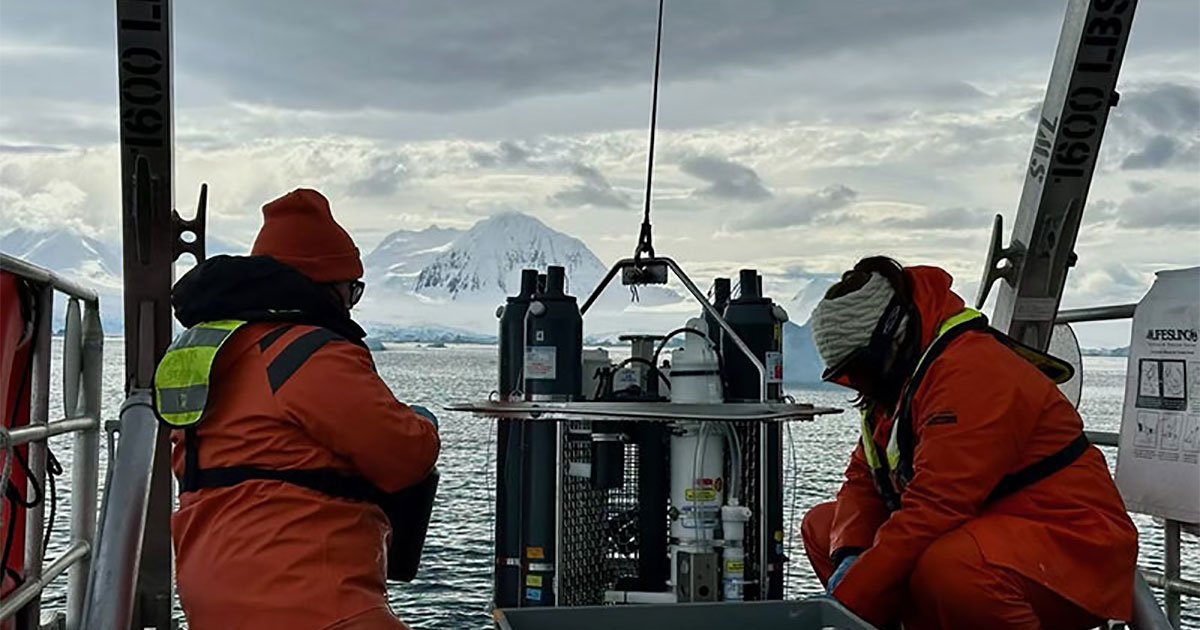 Researchers collect seawater in the Antarctic to study microbial food webs. (Image credit: Beth Connors)
Researchers collect seawater in the Antarctic to study microbial food webs. (Image credit: Beth Connors)
TAKING A CLOSER LOOK AT ANTARCTIC FOOD WEBS
Beth Connors, a PhD student in Scripps biological oceanographer Jeff Bowman’s lab, is in Antarctica for her third field season. After arriving in October 2023, Connors is spending six months on the ice sheet studying bacteria and carbon cycling from Palmer Station, a U.S. research outpost on Anvers Island near the Antarctic Peninsula, in collaboration with the Long Term Ecological Research. Connors is collecting seawater samples by boat to look for microbial DNA to study how marine bacteria, single-celled organisms called protists, and viruses fit into Antarctic food webs. The research could help provide an improved understanding of the processes controlling the flow of organic carbon in the Antarctic, which has important implications for climate change and the broader ecosystem. The research is supported by Bowman’s NSF CAREER award.
INVESTIGATING PHYTOPLANKTON
In early December, Scripps graduate student Christian Johnson embarked on a month-long Antarctic expedition aboard a Viking Cruises vessel. During the expedition, he contributed to FjordPhyto—a Scripps-led, NASA-funded citizen science program that explores the impact of melting glaciers on phytoplankton along the western Antarctic Peninsula.
He also conducted research for his PhD thesis, investigating the relationship of phytoplankton diversity to nutrients from penguin guano, and developing environmental DNA (eDNA) sequencing at sea. Johnson’s work is co-funded by NASA and Viking.
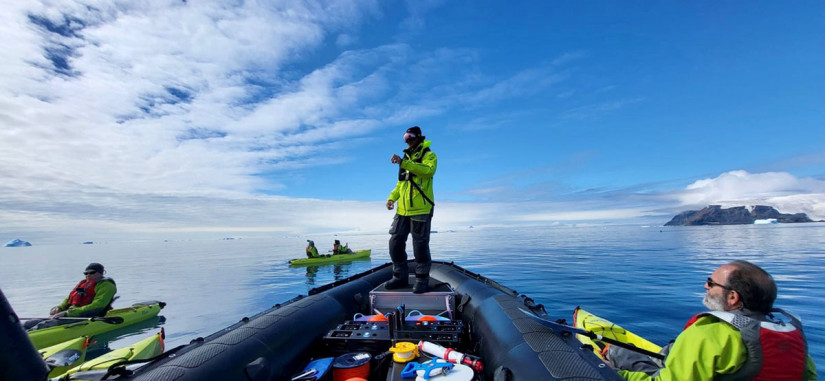 Christian Johnson and citizen scientists use a small boat and kayaks to explore sites of interest and collect samples from the western Antarctic Peninsula. (Image credit: Christian Johnson)
Christian Johnson and citizen scientists use a small boat and kayaks to explore sites of interest and collect samples from the western Antarctic Peninsula. (Image credit: Christian Johnson)
This marked Johnson’s third research cruise and second voyage to Antarctica. As a visiting field research scientist and polar guide with Viking, his time was split between sea days and exploration days. On non-travel days, he explored sites of interest on the western Antarctic Peninsula by boat, with the possibility of land exploration depending on permits and environmental conditions.
“As a guide, I safely facilitate the engagement of guests with the polar environment with active ocean literacy,” said Johnson, who is co-advised by Scripps scientists Maria Vernet and Andy Allen. “In my role as a field research scientist, I'm collecting nutrient and microbial samples around penguin rookeries, studying the impact of penguin colonies on surface nutrient concentrations and phytoplankton via DNA analysis, aligning with my research at Scripps."
After collecting data with guests, Johnson took the samples to the lab on board and began the extraction and analysis process. On travel days, he served as a lecturer, sharing insights about his research and leading marine science workshops with guest engagement on board.
CONTINUING THE NSF QUEST FOR THE OLDEST ICE
In 2022, Scripps PhD student Austin Carter scored a viral TikTok hit with a 33-second video that took viewers to the bottom of an ice core drill hole in the East Antarctic Ice Sheet. The video racked up more than 21 million views.
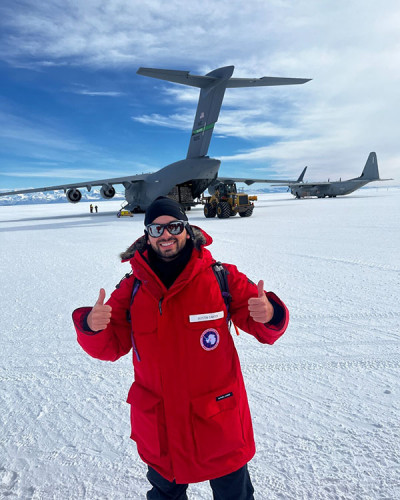 Scripps PhD student Austin Carter in Antarctica, where he and a team of researchers drilled down to ancient ice to reveal the planet's climate history. (Image credit: Austin Carter)
Scripps PhD student Austin Carter in Antarctica, where he and a team of researchers drilled down to ancient ice to reveal the planet's climate history. (Image credit: Austin Carter)
In November 2023, Carter returned to East Antarctica, where he and collaborating researchers drilled three new ice cores in the Allan Hills region. He continued to document his adventures in the field this season, and created another viral TikTok video showcasing the do’s and don’ts of life in Antarctica—a production that earned more than 27 million views. During the expedition, which concluded in mid-January 2024, Carter and the rest of the field team drilled down to ice that is more than 2 million years old, where the scientific community’s ice core record currently ends. These cores contain bubbles of ancient air trapped in the ice that offer snapshots of Earth’s atmosphere through time, which can deliver valuable insights regarding the planet’s climate history.
The ice core samples collected during the fieldwork will be analyzed by Scripps scientists Sarah Aarons and Jeff Severinghaus as well as researchers from other institutions. Carter’s research focuses on analyzing dust particles trapped in the Allan Hills ice to learn more about Earth’s past atmospheric circulation patterns. The work is supported by the Center for Oldest Ice Exploration.
By Brittany Hook and Alex Fox


